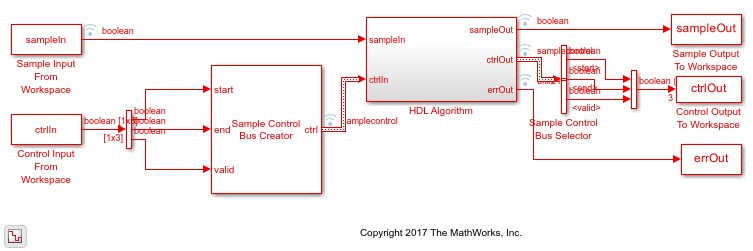LTE CRC Decoder
Detect errors in input samples using checksum
- Library:
Wireless HDL Toolbox / Error Detection and Correction
Description
TheLTE CRC Decoderblock calculates a cyclic redundancy check (CRC) and compares it with the appended checksum, for each frame of streaming data samples. You can select from the polynomials specified by LTE standard TS 36.212[1]. The block provides a hardware-optimized architecture and interface.
This block uses a streaming sample interface with a bus for related control signals. This interface enables the block to operate independently of frame size, and to connect easily with other Wireless HDL Toolbox™ blocks. The block accepts and returns a value representing a single sample, and a bus containing three control signals. These signals indicate the validity of each sample and the boundaries of the frame. To convert a matrix into a sample stream and these control signals, use theFrame To Samplesblock or thewhdlFramesToSamplesfunction. For a full description of the interface, seeStreaming Sample Interface.
Ports
Input
Output
Parameters
Model Examples
Algorithms
References
[1] 3GPP TS 36.212. "Multiplexing and channel coding."3rd Generation Partnership Project; Technical Specification Group Radio Access Network; Evolved Universal Terrestrial Radio Access (E-UTRA). URL:https://www.3gpp.org.
[2] Campobello, Giuseppe, Giuseppe Patane, and Marco Russo. "Parallel CRC Realization."IEEE计算机. Vol. 52, No. 10, October 2003, pp. 1312–1319.



